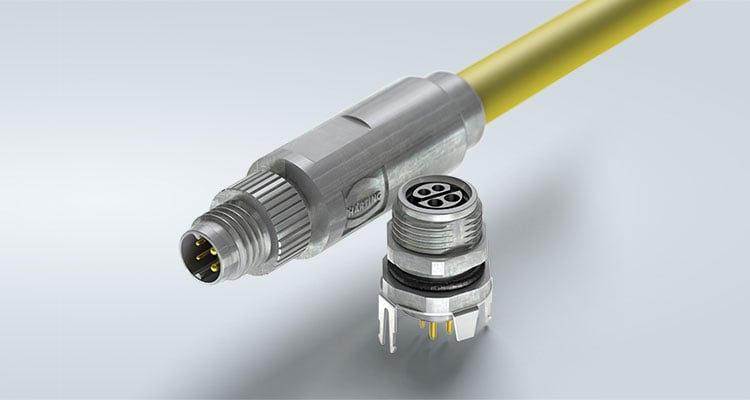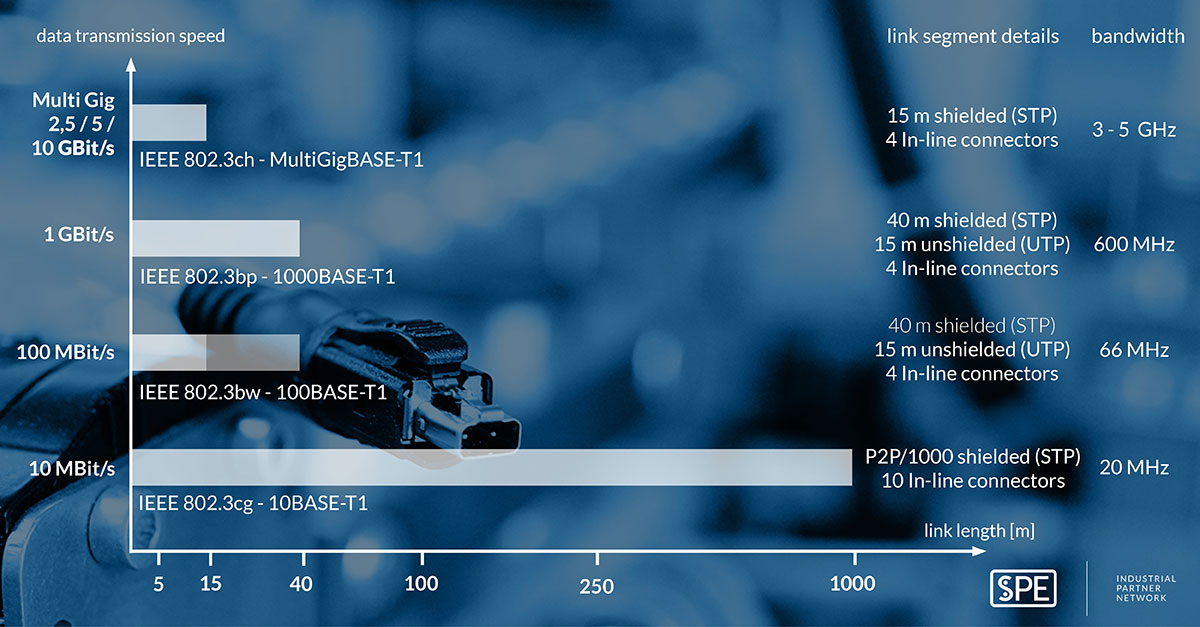Connectivity with a future: holistic, data-focused and sustainable
Megatrends such as climate change, de-globalisation and digitalisation are what shape technological developments. For industrial manufacturing, this implies a complete reorganisation in the next few years. Processes must be thoroughly automated; data must be generated extensively and leveraged to increase efficiency. There is a continual need for production-related information regarding temperature, humidity, vibration, power consumption and much more. This presents demanding requirements for future connectivity solutions. Society's prioritisation of sustainability means that there must be a consistently efficient use of resources. Ralf Klein, Managing Director of HARTING Electronics, explains how HARTING is strategically positioning itself to support its industrial customers now and for the future.
Single Pair Ethernet for shared future solutions
HARTING is continually developing its future-oriented SPE solutions, which enable communication from the cloud to the field level. The high data flows require high-performance components – yet at the same time these components must be resource-efficient. In association with over 50 partners, HARTING relies on the SPE Industrial Partner Network as an exchange platform, discussion forum and incubator for new ideas.
SPE as the standard in the next 10 years?
Establishing SPE as the standard for seamless Ethernet communication is one of the main goals of the SPE Industrial Partner Network. Whether you're dealing with semiconductors, magnetic components, cables and connectors or transmission standards – only when there are standardised and uniform components and protocols that offer investment security will SPE establish itself as the new "physical layer" in the field level. Single Pair Ethernet could be ready for widespread use within the next three to five years. According to industry experts, SPE will become the standard within the next 10 years.
Lifting a treasure trove of data
A sustainable economy requires information to design processes more efficiently. And SPE is predestined to deliver this information. An increasing number of smaller sensors are generating an ever-growing amount of data. Whether it's temperature, humidity, vibration or power consumption – the processing and analysis of new, previously unavailable data provides valuable information that can be used to improve efficiency. Until now, this treasure trove of data has remained hidden and, thus, unused. Using SPE, this pool of data can now be connected to the upper levels of the automation pyramid.
Digital twin for visualising the optimisation potential
The vision of the digital twin then becomes easier to implement. The positive consequences are that processes can be mapped more transparently and optimised more easily based on the new data. Whether it's reduced production times, lower energy consumption or more efficient use of resources – the advantages of having a transparent field level include both the economic benefits for users and the ecological plus points for society as a whole.
SPE is more powerful with less copper
SPE helps to sustainably save raw materials. Not only because is uses less copper compared to multi-core Ethernet solutions. With the SPE interface, HARTING is meeting the demands of industrial customers for greater efficiency and higher performance, while at the same time using less energy.
An overview of the SPE advantages:
- End-to-end TCP/IP communications as an alternative to proprietary bus or power interfaces,
- Real-time capabilities via OPC UA over TSN,
- Excellent safety and 100% availability
- Transmission rate of up to 1 Gbit/s.
- Versatile range from a few meters up to 1000 m and data transmission rate of 10 Mbit/s
- Minimal space requirement for cables and distributors,
- Easy to install,
- Simultaneous power supply for end devices and sensors using Power over Data Line (PoDL) or hybrid SPE + power cabling,
- No rechargeable or disposable batteries needed,
- Reduces costs with improved operational reliability,
- Less weight and fewer raw materials for installed sustainability.


